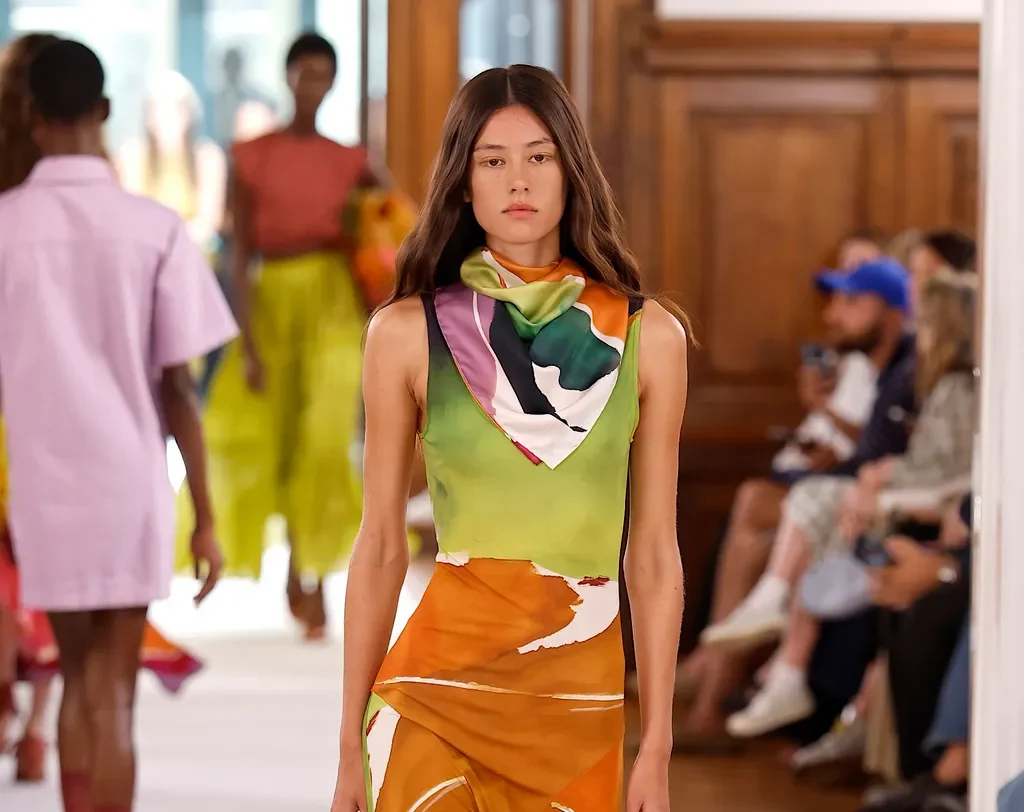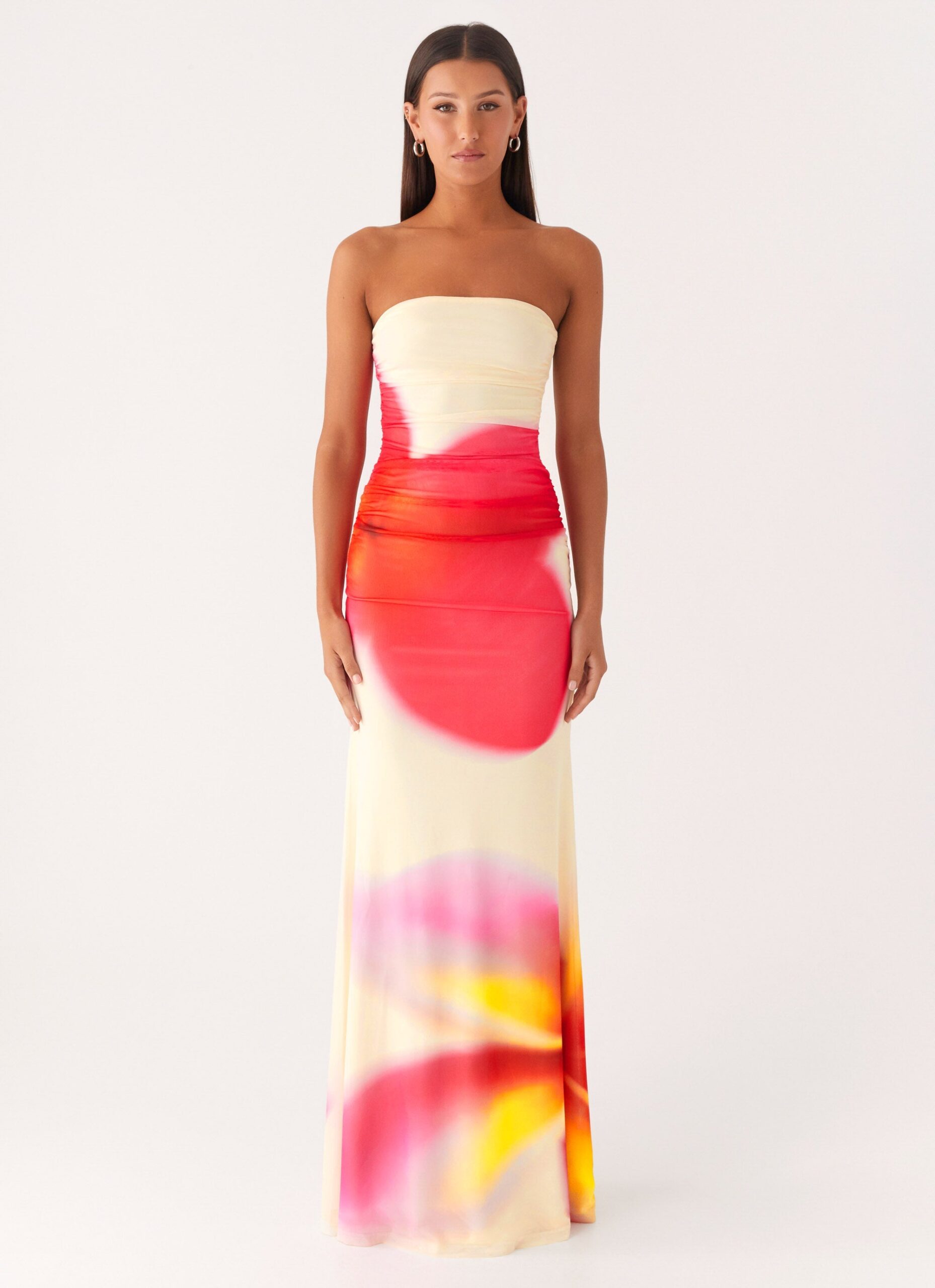Ulla Johnson unveiled a 57-look collection for Spring/Summer 2026 inside the Cooper Hewitt Museum on 91st and 5th Avenue — a venue steeped in personal meaning. As a native New Yorker, Johnson described the moment as full circle, returning to the very museum her mother once brought her to as a child.
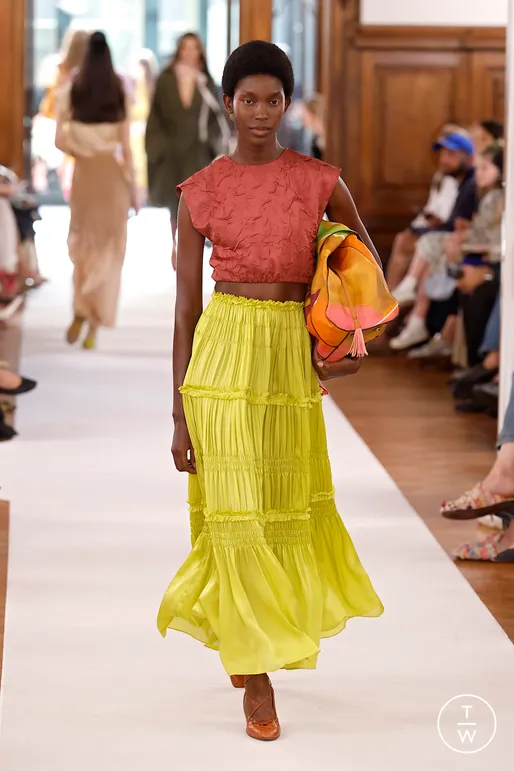
The collection, inspired by abstract expressionist painter Helen Frankenthaler, unfolded like a living canvas. Textures came alive — fringes, ruffles, feathers, lace — creating a maximalist’s dream. Silhouettes were punctuated with balloon sleeves, echoing the dramatic proportions seen at Aknvas and Christian Siriano this season.
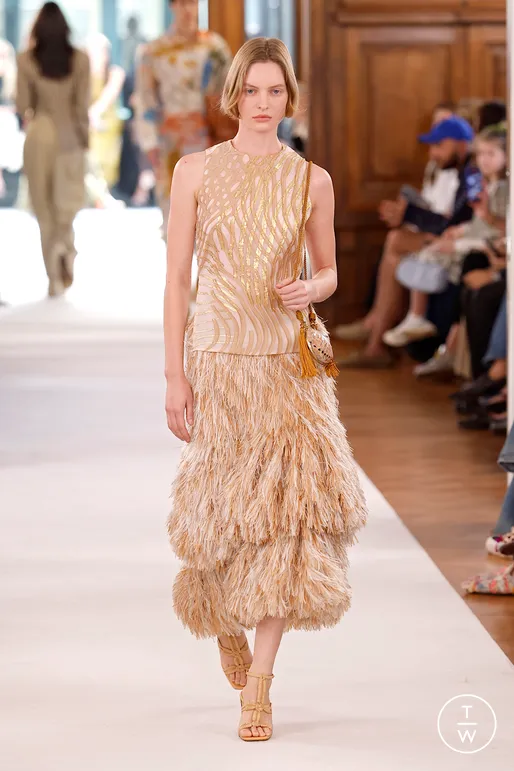
Color moved beyond the familiar pastels of spring. Yes, there were peaches and lavenders, but the standout tones were sunset-inspired: mustard, rust, and indigo blues — a direct nod to Frankenthaler’s painting Moontide.Snippets of a 1993 Frankenthaler interview played as a backdrop, where she mused, “‘Beautiful,’ which is always a tricky word, but now it’s become an incendiary word.”
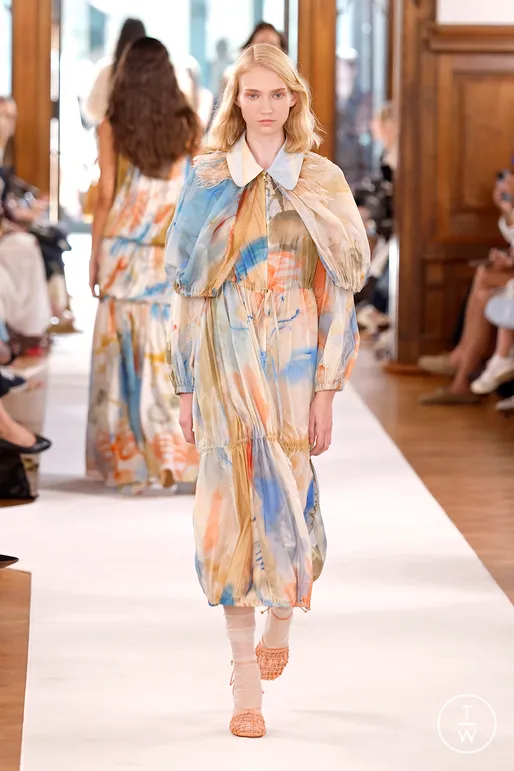
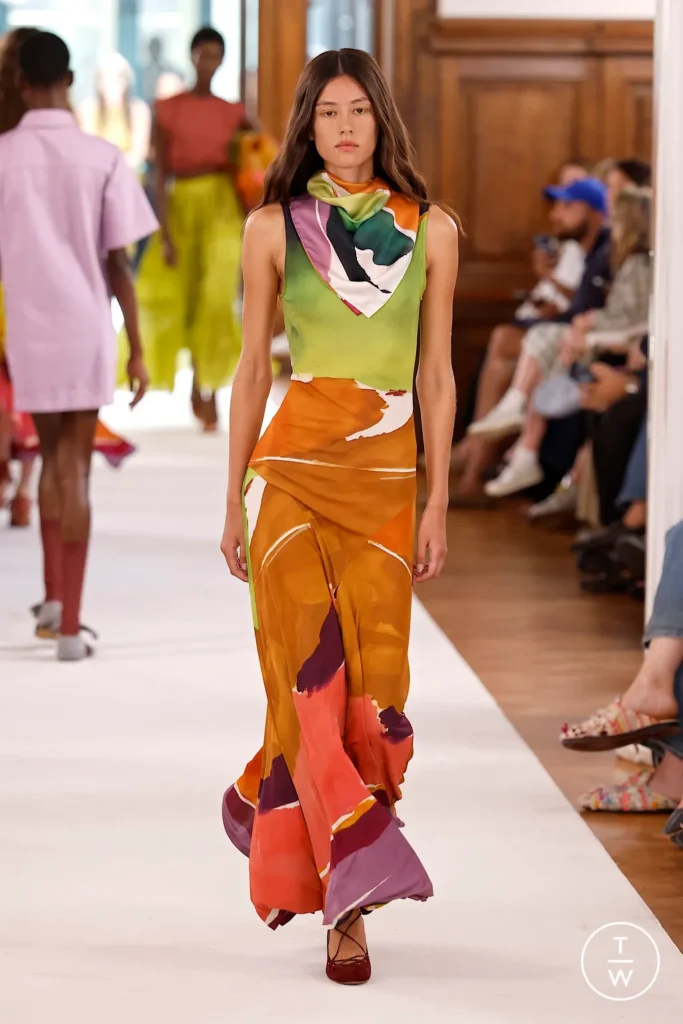
Against her words, models drifted down the runway like brushstrokes across canvas — embodying beauty not as something proven, but simply as fact.This season, Johnson proposes a new kind of spring romanticism — one where texture takes precedence over florals, and beauty, far from obsolete, is reimagined as art in motion.
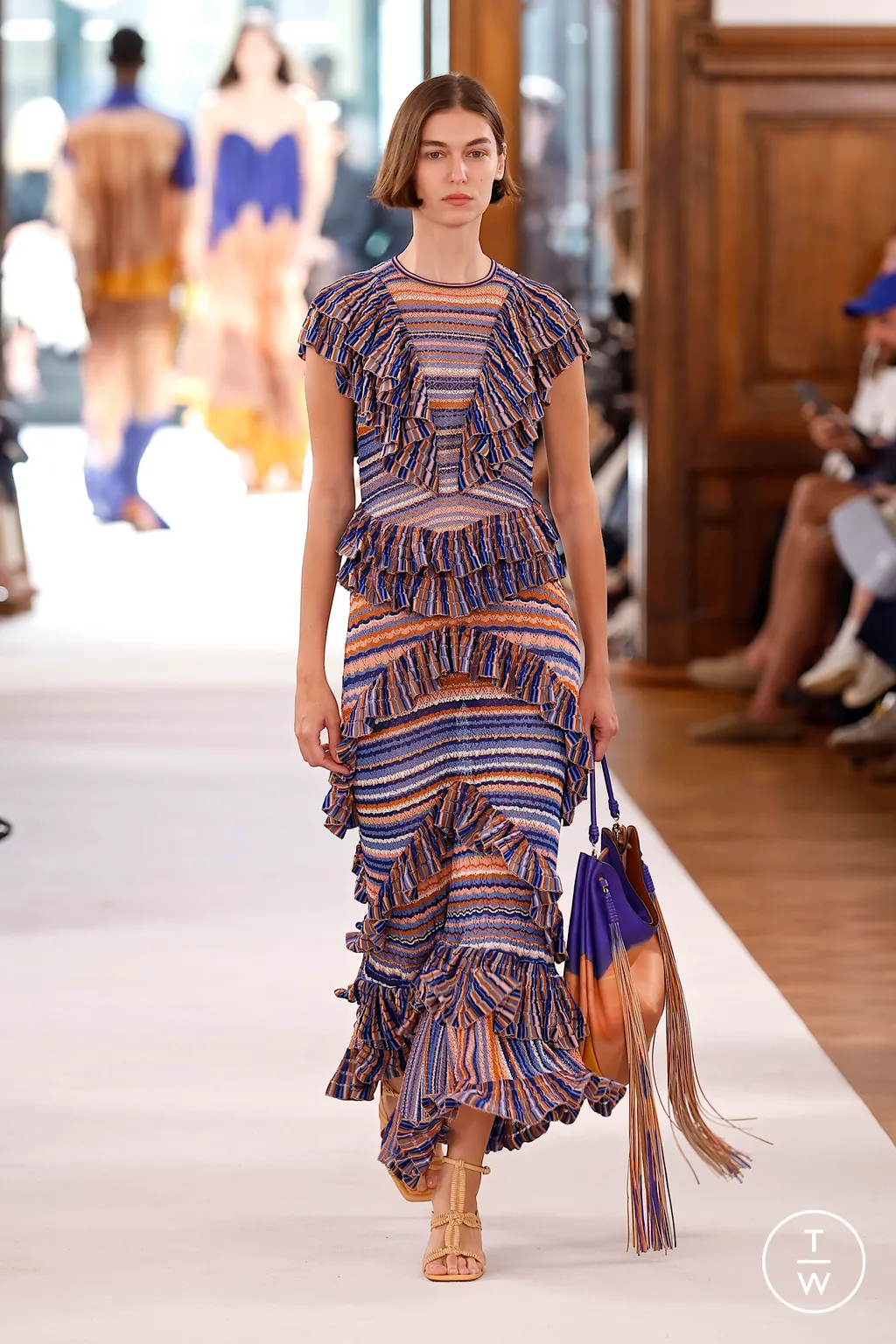
I wouldn’t call myself a tennis expert, but I’ll never forget watching Serena Williams play her last match at the U.S. Open. The energy, the history, the way the whole stadium seemed to hold its breath — it was unforgettable. Since then, I’ve always had a soft spot for the Open. It’s not just a sporting event, it’s a cultural one — where fashion, celebrity, and sport all collide.
If I had gone this year, I’d want my outfit to reflect that balance: sporty enough to nod to the game, but stylish enough to feel at home in the stands. My style is usually simple, but the U.S. Open feels like the perfect place to play a little — to mix crisp whites, tailored pieces, and statement accessories that make the look feel fresh.
Look 1: Playful & Sporty
For the moments when you want to nod to tennis more literally, a tennis-inspired skirt or dress in bright colors or stripes feels perfect. Pair it with fun sneakers and a visor, and you’re instantly giving nods to the court while keeping it your own.
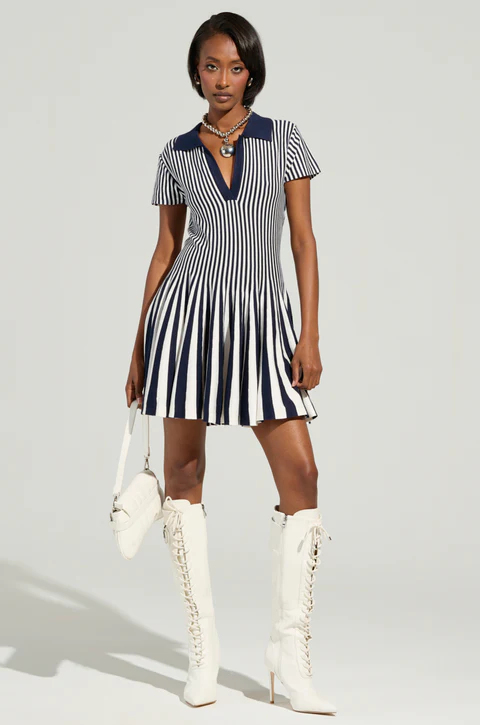
ALINA PLEATED KNIT FIT AND FLARE MINI DRESS IN NAVY
Look 2: Prim & Polished
This pleated mini dress from Meshki is the perfect mix of elegance and contemporary design. I love the drop-waist detail, which flatters most shapes, and the pleated skirt at the bottom — a subtle nod to the classic tennis skirt. It’s ideal for anyone who wants to stay comfortable while still looking effortlessly put-together for a day at the tennis courts — and it easily transitions into a fun, stylish look for an evening out.
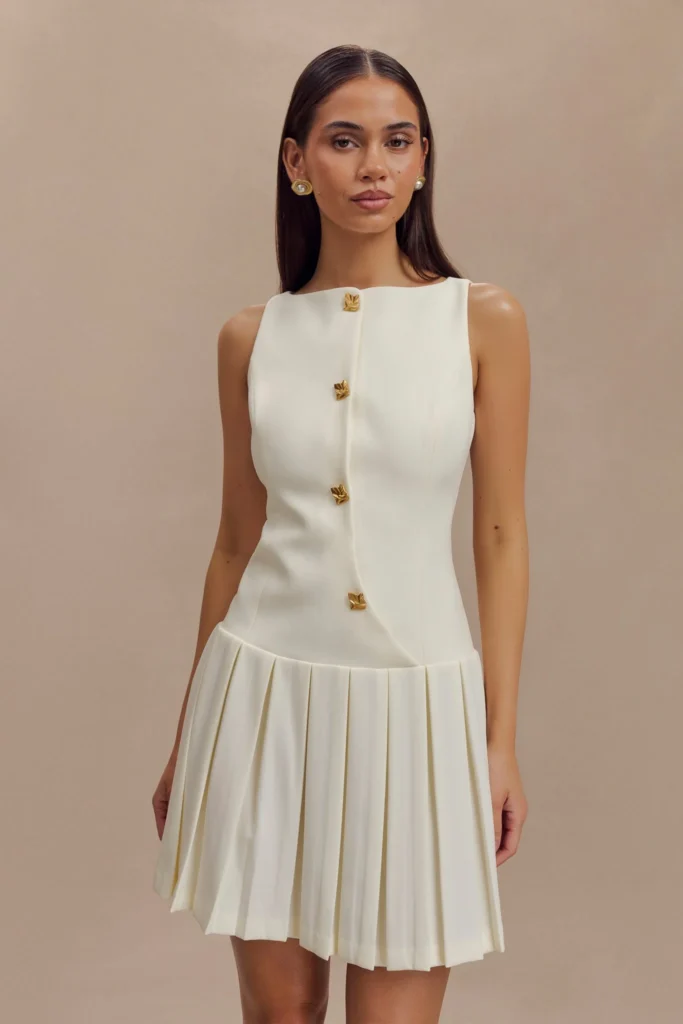
As someone whose wardrobe leans more on the simple side — think clean lines and fewer frills — Fashion Week feels like the perfect time to play dress-up. And if there’s one show that deserves a little extra sparkle, it’s PatBO. Known for its bold, playful glamour, the SS26 runway would’ve been the perfect stage to turn things up. I wasn’t invited this time, but if I were, these are the pieces I would’ve shown up in. The best part? Every look is from Peppermayo — proof you don’t need designer prices to serve a Fashion Week-worthy outfit.
I chose these pieces because of their feminine silhouette, floral designs and bold color that I know will compliment my skin tone!
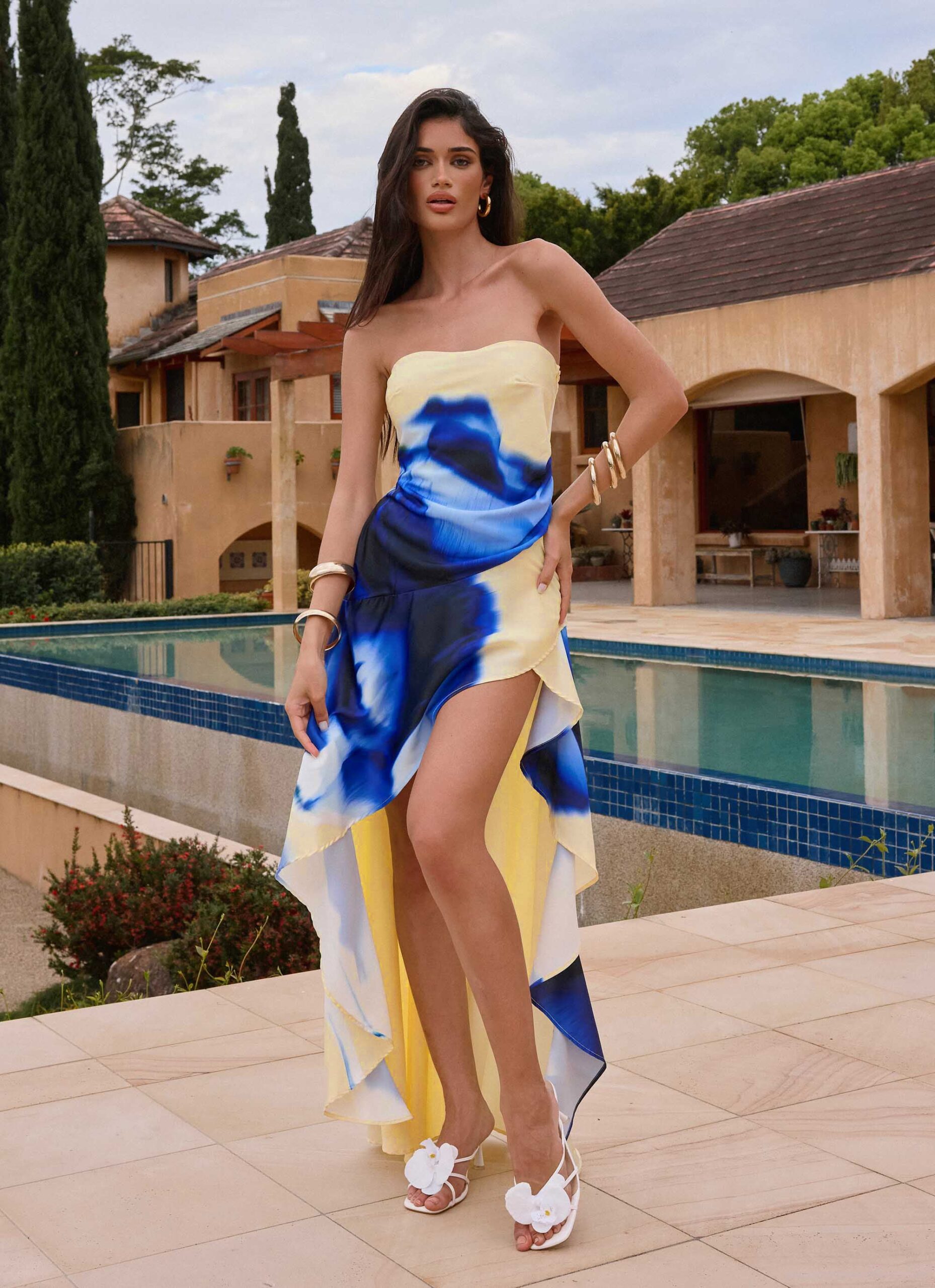
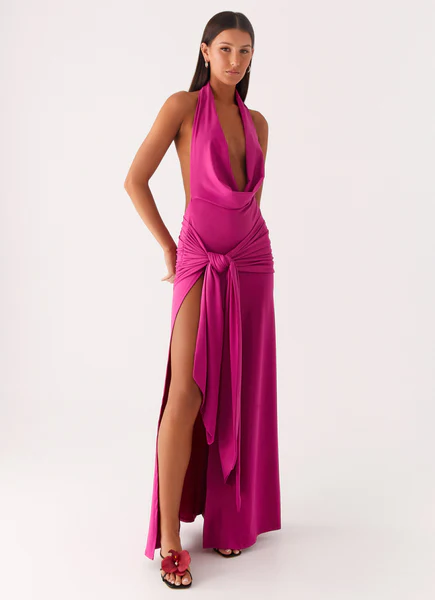
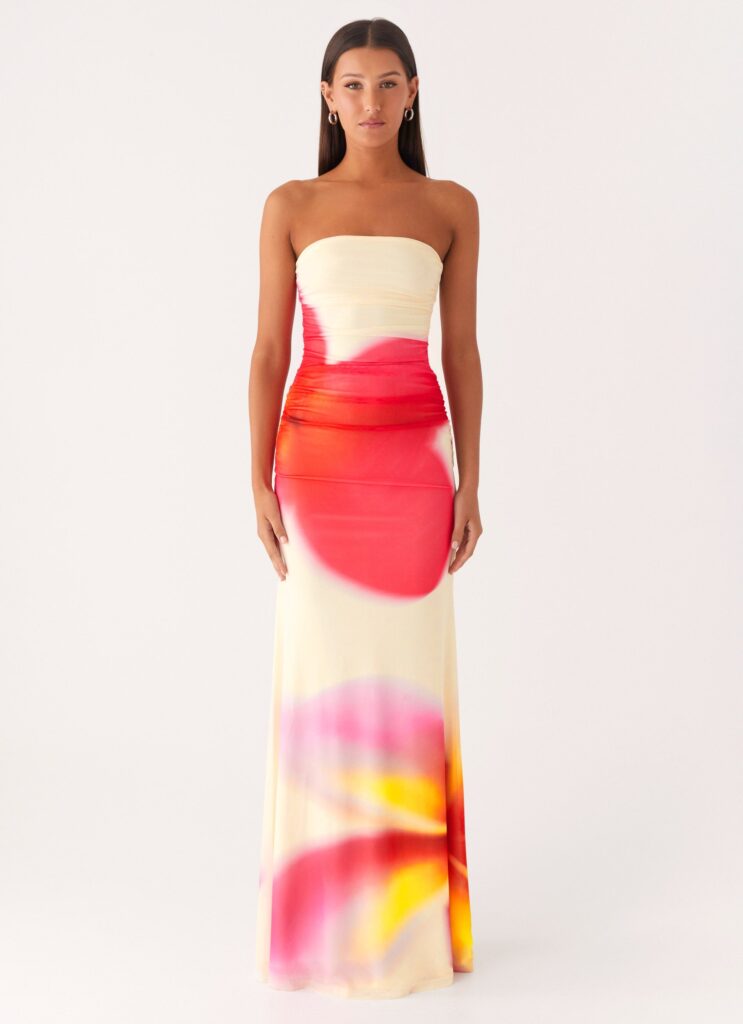
Would you wear this? Share below in the comments!
Creative Director Patricia Bonaldi unveiled her “Latin Soul”, for PatBO’s Spring 2026 collection, paying homage to her Brazilian heritage and celebrating freedom of expression, movement and color through billowy yet feminine silhouettes, reimagined polka-dots, lace, ruffles, and sequined floral motifs.
Here are 7 of my favorite looks from the 38 look collection:
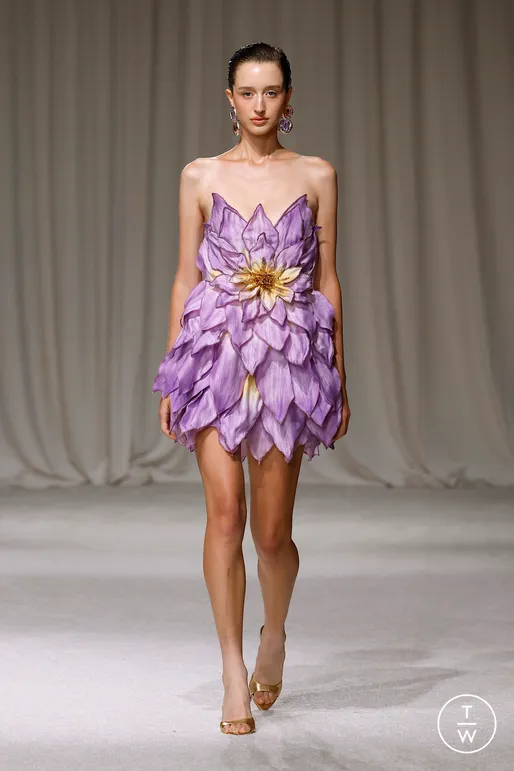
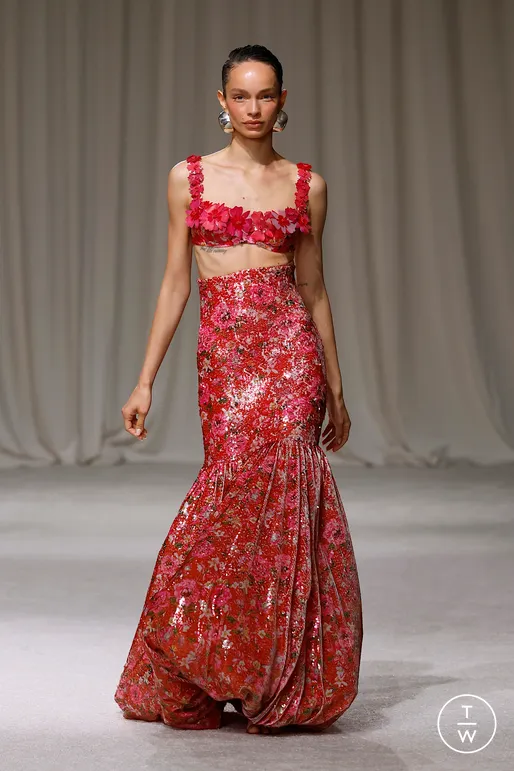
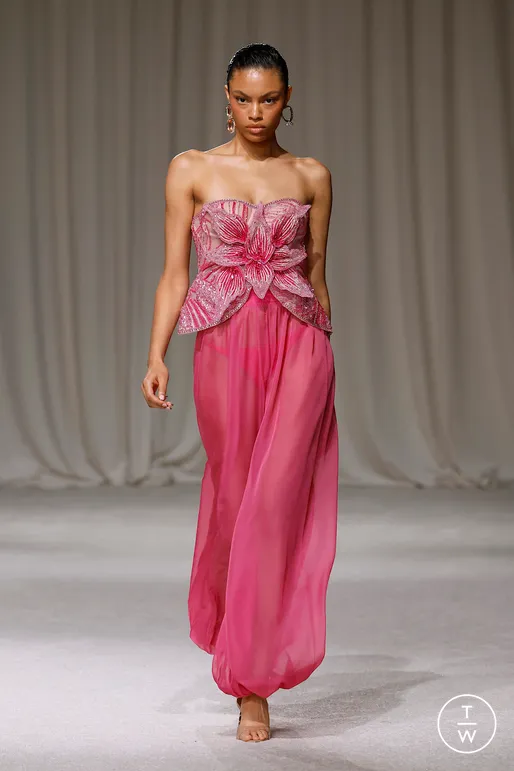
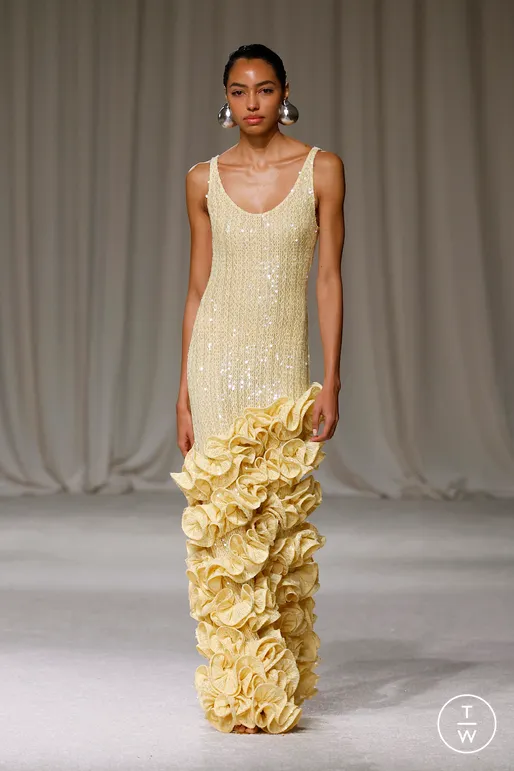
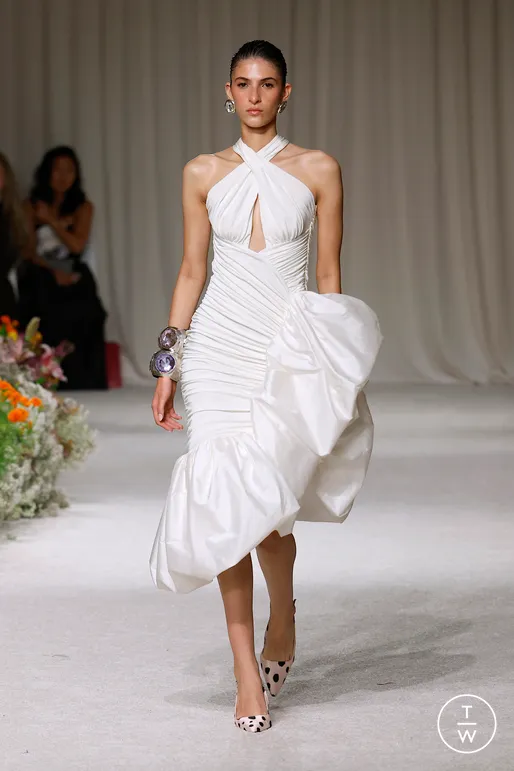
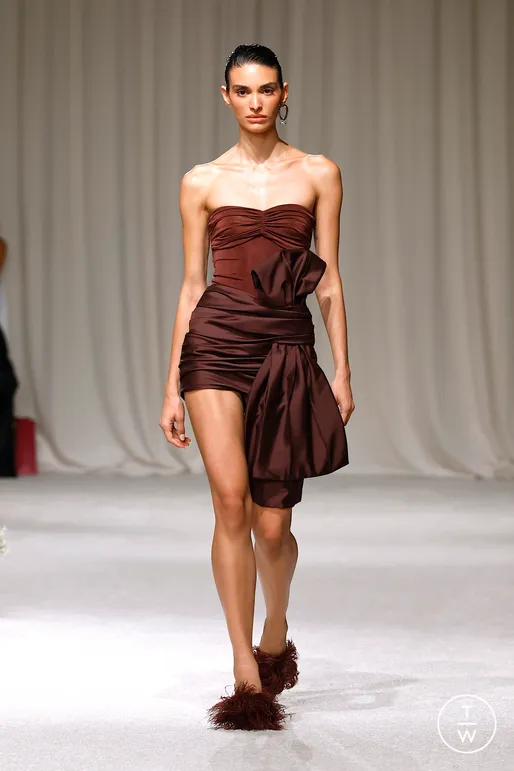
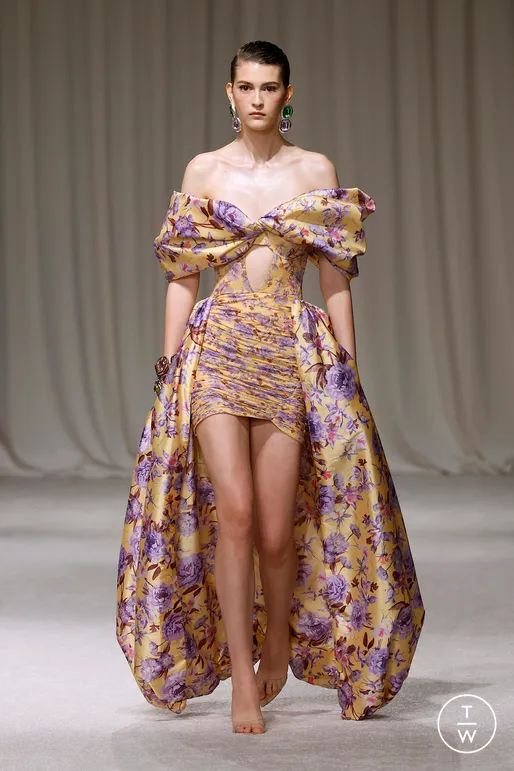
At the PatBo Spring/Summer 2026 runway show during New York Fashion Week in September 2025, guests embraced the brand’s signature aesthetic of vibrant maximalism and Brazilian-inspired flair. Many guests incorporated elements similar to those on the runway, showcasing the bold, feminine, celebratory style that PatBo is known for.
Fashion Week used to be where the future of fashion was revealed. But as the front rows fill with celebrities, private clients, and handpicked press, the public has been pushed further from the experience. Livestreams are limited. Media access is shrinking. And for most people, the only glimpse they get of the runway isn’t from the designers — it’s from influencers.
In 2025, they’ve quietly become the public’s last access point to what was once the most influential week in fashion. Whether it’s a GRWM from outside the venue or a TikTok from a seat they weren’t invited to, creators are now the filter through which Fashion Week reaches the world — and the filter is getting stronger.
The Return of Invite-Only Culture
Invite-only culture has returned full force post-pandemic. Major brands are limiting livestreams — with over 60 brands partnering with CFDA, only one-third chose to livestream in partnership with Rockefeller Center. Media access is tighter than ever, creating a divide between those inside the tents and the public left outside.

Fashion’s Night Out: When Fashion Week Opened Its Doors
Fashion Night Out (FNO) used to be one of the most exciting and talked-about events during Fashion Week. Launched in 2009 by Vogue, CFDA, and the NYC government, it was intended to bridge the gap between high fashion and the public. Walking the streets of Soho, one could find shopping parties, in-store events, and celebrity appearances — I once saw Karl Lagerfeld walking down the street, drawing a quick mob around him.
FNO created a sense of inclusion and accessibility during Fashion Week, making it feel like anything was possible with the creative energy in the air.
Unfortunately, FNO was halted in 2013 due to a lack of ROI and retail fatigue. Brands and retailers shifted their focus toward digital content and influencers, leaving a void with no similar public-facing event to replace FNO.
Influencers: The Public’s New Front Row
Today, the public’s only real “access point” is through influencers on social platforms. The CFDA attempted to include the public by partnering with Rockefeller Center, providing a mix of livestreams and recorded runway shows, making it the only centralized hub — physical or digital — where the public could view NYFW shows. This year, there were fewer panels and more experiential events and pop-ups, highlighting the shift toward immersive, influencer-driven experiences.
Influencers have become the bridge between exclusive fashion shows and the public’s desire for access, sharing real-time moments that the official channels no longer provide.
The Rise of “Influencer Fashion Week”
While traditional Fashion Week is still the place where trends debut and editors take notes, most people don’t watch the actual shows — they experience Fashion Week through influencers. And for them, the influencer content is Fashion Week.
Personally, I’ve watched from the sidelines as invited bloggers and influencers from NYFW share “get ready with me” videos and street style photoshoots of their best looks. To some, Fashion Week also feels like an influencer fashion show.
Fashion Week might not want the public anymore — but the public is still watching, through someone else’s camera roll, and Instagram and TikTok recaps. For many, that’s the only front row they’ll ever see.
Your Front Row: Watching Fashion Week Through Someone Else’s Lens
Have you noticed this shift? Would you rather attend Fashion Week, or build your own version with your community? Share your thoughts in the comments or on social!
